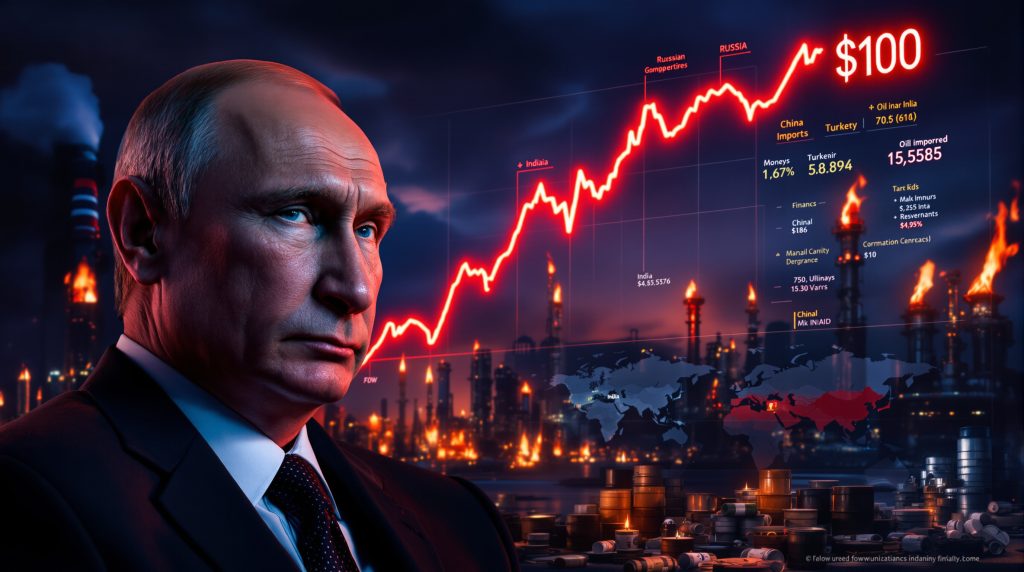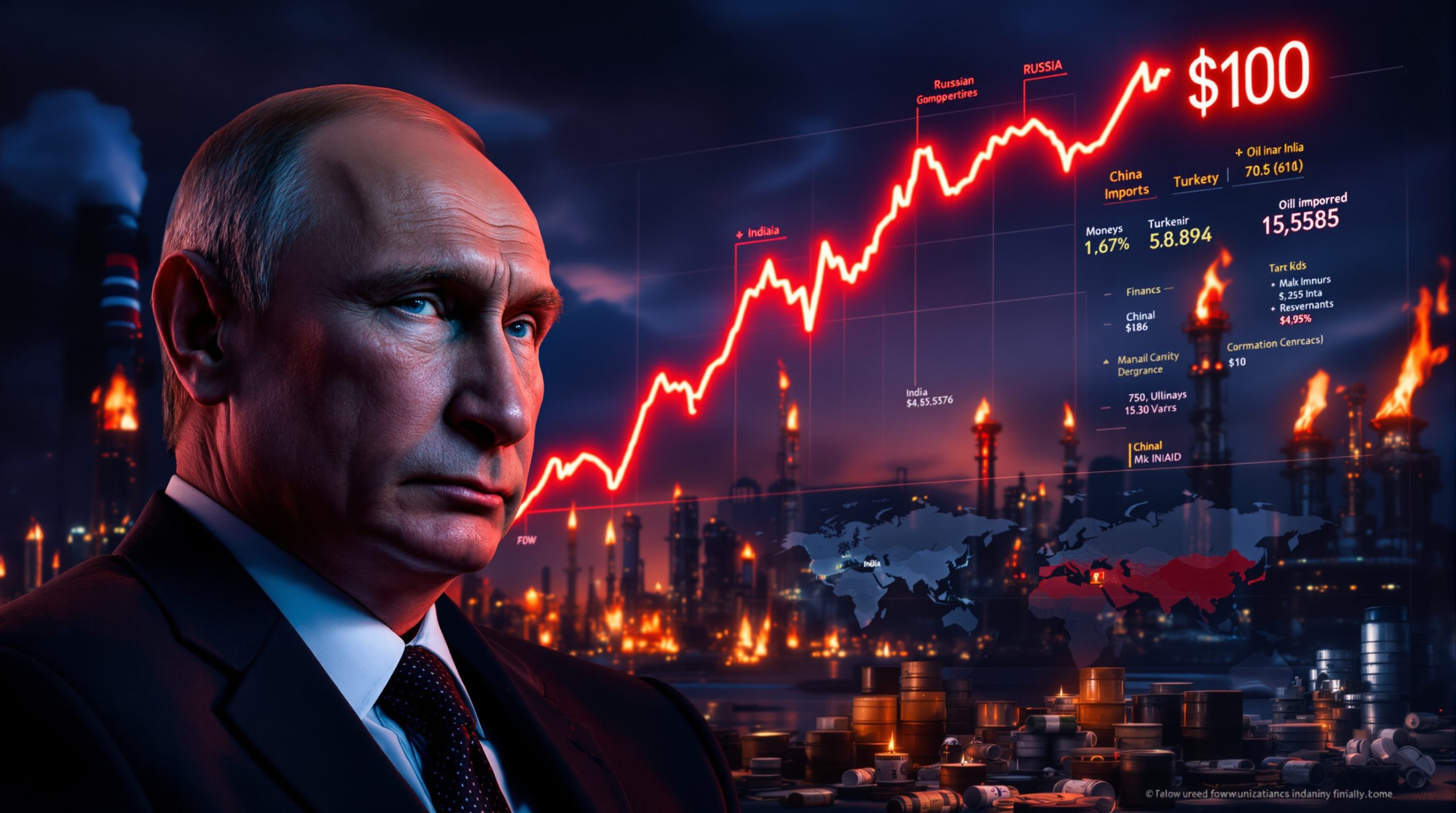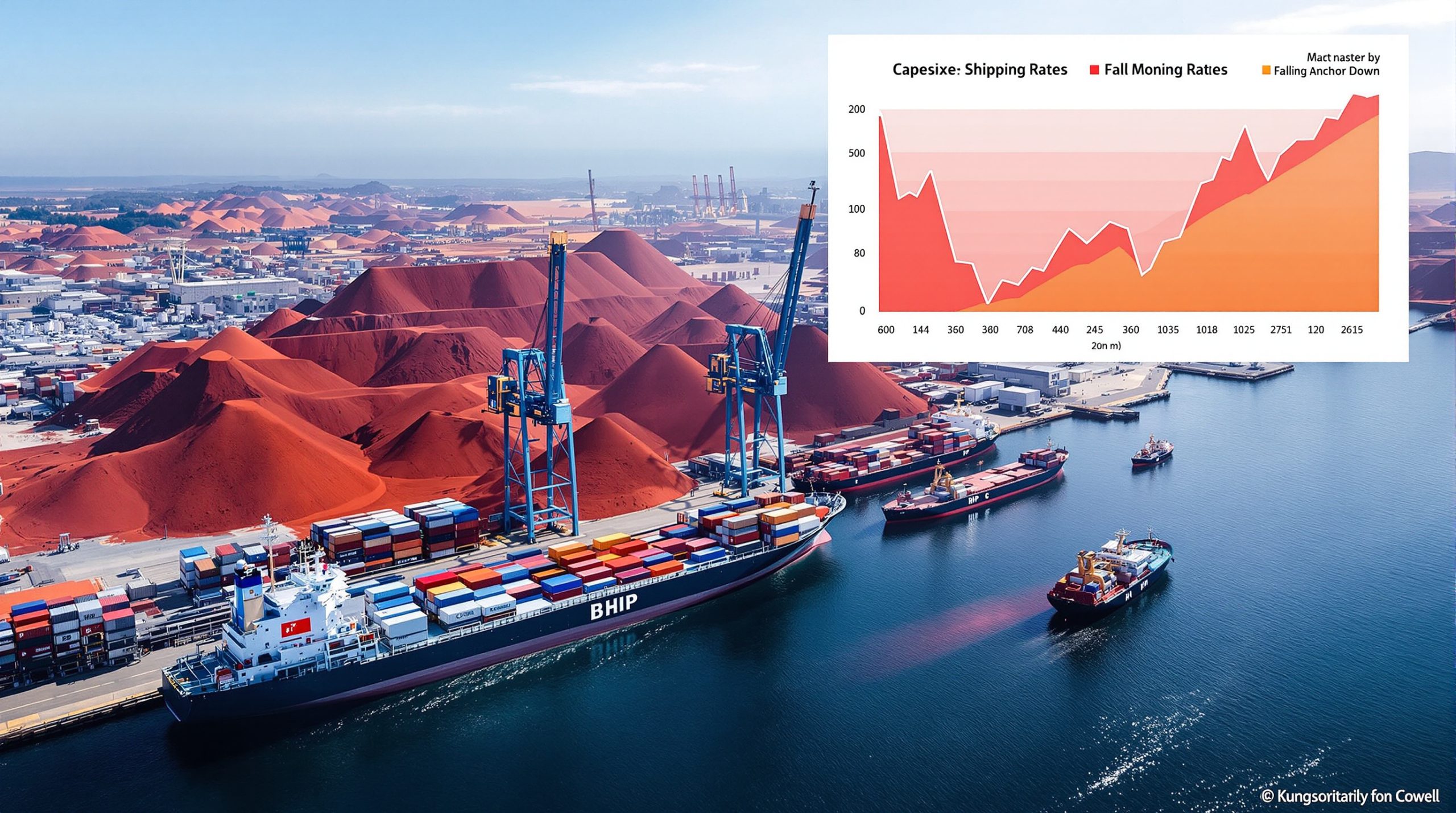Putin's Warning: Why Global Oil Prices Could Surge Beyond $100 Without Russian Crude
The global oil market remains in a delicate balance, with Russian crude playing a pivotal role in maintaining current price levels. President Vladimir Putin recently issued a stark warning about potential market consequences if Russian oil were to disappear from international markets. His assessment highlights the continuing significance of Russian production in global energy security and price stability.
Recent data shows Russian crude exports reached a 16-month high in September 2025, loading 2.5 million barrels per day from three Western ports – a 25% month-over-month increase despite ongoing geopolitical tensions and sanctions pressure.
What Did Putin Say About Oil Prices?
During recent diplomatic discussions, President Putin emphasized that removing Russian oil from global markets would have immediate and dramatic consequences for energy prices worldwide. He specifically warned that oil prices would "immediately skyrocket beyond $100 per barrel" if Russian crude exports were halted.
Putin argued that global energy markets simply cannot absorb the loss of Russian production volumes without severe price repercussions, positioning Russia's continued participation in global oil trade as essential for price stability.
This statement comes at a time when current oil price movements show WTI crude at $61.04 and Brent crude at $64.64 – significantly below Putin's predicted crisis levels, but vulnerable to supply disruptions.
How Much Russian Oil Currently Flows to Global Markets?
Russia remains one of the world's top three oil producers, alongside the United States and Saudi Arabia. Current Russian production figures show:
| Metric | Volume |
|---|---|
| Daily crude production | Approximately 9-10 million barrels |
| Exports | Around 7 million barrels per day |
| Percentage of global supply | 11-12% |
| Major buyers | China, India, Turkey |
Despite Western sanctions following the Ukraine conflict, Russian crude exports have remained resilient, with shipments reaching a 16-month high recently. This continued flow has been crucial for maintaining global supply-demand balance.
The most recent data indicates Russian crude exports from Western ports reached 2.5 million barrels per day in September 2025, showing a significant 25% increase month-over-month despite international pressure to reduce purchases.
Why $100 Oil Would Impact Global Economies
A return to $100+ oil prices would have far-reaching economic consequences across multiple sectors and regions:
Economic Vulnerability
Putin specifically highlighted that such high prices would be particularly detrimental to:
- Weaker economies with limited financial reserves
- European countries already facing energy challenges
- Developing nations with high energy import dependencies
- Global manufacturing and transportation sectors
Inflationary Pressure
Oil price spikes historically correlate with broader inflation:
- Transportation costs increase across all supply chains
- Manufacturing input costs rise
- Energy-intensive industries face margin compression
- Consumer spending power diminishes as fuel costs climb
With current prices showing an oil price stagnation after "edging closer to $65 per barrel" following an 8% weekly loss as of early October 2025, the market remains well below crisis levels but sensitive to supply disruptions.
Is Putin's Warning Realistic or Political Posturing?
Market analysts offer mixed assessments of Putin's claim:
Supporting Factors for Price Spike
- Limited OPEC+ Spare Capacity: While slightly improved from 2022 levels, OPEC's ability to quickly increase production remains constrained
- Global Inventories: Commercial oil stockpiles in many regions remain below five-year averages
- Refining Bottlenecks: Global refining capacity hasn't kept pace with demand growth
- Geopolitical Risk Premium: Middle East tensions and shipping disruptions already support prices
Mitigating Factors Against Extreme Spikes
- Increased Non-OPEC Production: Output growth from the Americas and other regions provides some buffer
- Demand Concerns: Economic slowdowns in major economies could temper consumption growth
- Strategic Reserves: Major consumers could deploy emergency stockpiles
- Demand Destruction: Very high prices would likely trigger conservation and substitution
Recent market developments show oil experiencing "five straight daily declines" before a marginal Friday recovery, suggesting bearish sentiment is becoming mainstream despite geopolitical concerns, according to Putin's comments on potential oil price spikes.
How Are Major Oil Importers Responding?
The diplomatic pressure to reduce Russian oil imports continues to intensify:
Trump Administration's Approach
Under President Trump (as of August 2025), the United States has maintained diplomatic pressure on major Russian oil buyers, particularly targeting:
- India, which has significantly increased Russian oil imports since 2022
- China, which remains Russia's largest crude customer
- Turkey and other nations that have maintained or increased Russian imports
This represents a continuation of efforts to isolate Russian energy exports, though with different emphases than previous administrations.
India's Strategic Position
India has emerged as a particularly important player in this dynamic:
- Indian refiners have become major purchasers of Russian crude
- The country has resisted pressure to halt Russian oil purchases
- Indian officials have indicated they would need compensatory supply from other sources before reducing Russian imports
- Price considerations remain paramount for India's energy security strategy
Recent reports suggest India has begun slightly diversifying its imports away from Russia, though economic considerations continue to drive purchasing decisions.
What Do Market Forecasts Suggest About Future Oil Prices?
Current market projections offer context for evaluating Putin's warning:
Supply-Demand Outlook
Market indicators suggest that global oil supply could exceed demand in 2025–2026, potentially creating conditions that would:
- Moderate price pressures even if some Russian barrels exit
- Provide more flexibility for market adjustments
- Allow time for alternative supply chains to develop
Price Forecast Comparisons
| Scenario | Average Price Forecast |
|---|---|
| Baseline (Russian oil remains in market) | $65-75 per barrel |
| Partial Russian export disruption | $80-90 per barrel |
| Complete Russian export disruption | $95-120+ per barrel |
These forecasts suggest Putin's warning falls within the range of plausible outcomes, particularly in a sudden disruption scenario.
Current market sentiment shows "bearishness is gradually becoming the mainstream sentiment" with an OPEC+ meeting potentially leading to "further price declines in case members agree to expedited production unwinding," as reported by Reuters on OPEC's oil plans.
How Has the Market Previously Responded to Supply Shocks?
Historical precedent provides valuable context:
2022 Ukraine Conflict
When Russia first invaded Ukraine in February 2022:
- Brent crude briefly spiked above $130 per barrel
- Prices moderated as Russian exports continued despite sanctions
- Market adaptation occurred more quickly than many expected
2019-2020 Saudi Facility Attack
After drone strikes on Saudi Arabia's Abqaiq facility in 2019:
- Prices initially jumped nearly 20%
- The spike proved temporary as production was restored
- Market psychology shifted from panic to adjustment
These historical examples suggest that while Putin's $100+ prediction is plausible in an immediate shock scenario, markets typically find equilibrium more quickly than worst-case projections suggest.
US Shale Response Capabilities
An important factor in any oil price spike scenario is the response capability of US shale producers:
Current Shale Economics
Industry leaders have provided important context for understanding potential US drilling activity:
- Diamondback Energy's CEO recently stated that US output growth will stall if prices stay near $60 per barrel
- Current prices are equivalent to approximately $45 per barrel from 6-7 years ago on an inflation-adjusted basis
- Higher prices would likely trigger increased drilling activity, though with some lag time
This insight suggests that while US shale remains a potential swing producer, its response to price signals may be more measured than in previous cycles.
What Are the Implications for Energy Security Policies?
Putin's warning reinforces several strategic considerations:
Diversification Imperatives
- Energy importing nations face renewed pressure to diversify supply sources
- Investment in alternative energy pathways becomes more strategically valuable
- Regional energy cooperation frameworks gain importance
- Strategic petroleum reserves remain crucial insurance policies
Geopolitical Leverage
Putin's statement itself serves multiple purposes:
- Reminds importing nations of Russia's continued market significance
- Signals potential consequences of further sanctions
- Positions Russia as essential to global energy stability
- Reinforces Russia's economic resilience narrative
Looking Ahead: Market Balancing Factors
Several factors will influence whether Putin's warning could materialize:
OPEC+ Production Decisions
The upcoming OPEC+ meeting could significantly impact market dynamics:
- Kuwait has indicated that robust oil demand justifies OPEC+ output hikes
- Kazakhstan has expressed support for OPEC+ production increases
- Any decision to increase production would add supply cushion against potential Russian disruptions
Russian Production Resilience
Despite sanctions and military challenges, Russian oil production has shown remarkable resilience:
- Russian refinery runs have been "heavily constrained by Ukraine's barrage of drone strikes"
- This has redirected more crude to export markets rather than domestic processing
- Continued adaptation to sanctions suggests Russia will maintain significant market presence
Conclusion: Balancing Warning and Reality
President Putin's warning that oil prices could surge beyond $100 without Russian crude represents both market reality and strategic messaging. While the complete removal of Russian oil would indeed create significant upward price pressure, the severity and duration of such an impact would depend on numerous factors including:
- The speed of any potential disruption
- OPEC+ response capabilities
- Alternative supply development
- Global economic conditions
- Strategic reserve deployments
What remains clear is that despite sanctions and geopolitical tensions, Russian oil continues to play a crucial role in global energy markets, and any significant disruption would reverberate throughout the global economy. This reality underscores the complex intersection of energy markets, geopolitics, and economic security that defines the current global landscape.
With current oil price rally showing WTI Crude at $61.04 and Brent Crude at $64.64 as of October 2025, markets remain well below crisis levels but vulnerable to supply shocks of the magnitude Putin describes. Furthermore, potential US economy tariffs could further complicate the global energy landscape.
Further Exploration
For deeper understanding of these dynamics, energy market observers should monitor:
- Upcoming OPEC+ meeting outcomes and compliance levels
- Evolving US shale economics and production responses
- India and China's purchasing patterns for Russian crude
- Development of alternative supply chains and infrastructure
- Strategic petroleum reserve policies of major importing nations
These factors will collectively determine whether Putin's warning represents an imminent threat or a more distant possibility in global oil markets.
Looking for the Next Major Mineral Discovery?
Discover significant ASX mineral finds instantly with Discovery Alert's proprietary Discovery IQ model, which transforms complex data into actionable insights for savvy investors. Explore why major mineral discoveries can lead to substantial market returns by visiting Discovery Alert's dedicated discoveries page and begin your 30-day free trial today.




